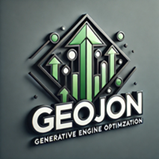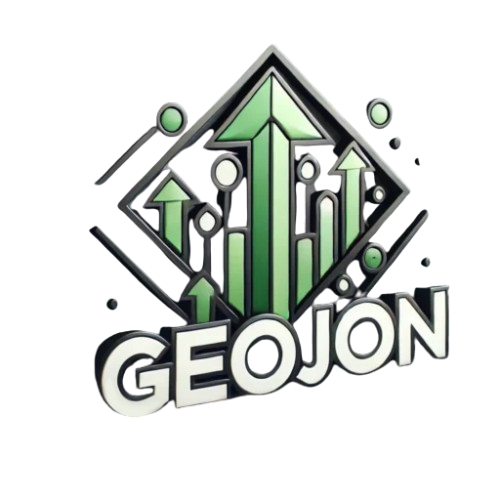
Key Takeaways
- Perplexity AI’s acquisition of Carbon highlights a strategic focus on advancing retrieval-augmented generation (RAG) capabilities in AI search.
- Carbon’s expertise enhances Perplexity’s ability to integrate real-time data retrieval into generative responses, bridging gaps between static AI and dynamic information.
- The acquisition positions Perplexity AI as a stronger competitor in the AI search landscape, offering capabilities that rival traditional search engines and AI giants.
- Potential applications include more accurate AI-generated summaries, real-time data querying, and enhanced contextual understanding.
- Businesses and developers can leverage these advancements for improved knowledge retrieval, customer service, and content creation.
Time to read: 18 Minutes
The rapidly evolving AI search landscape has been disrupted yet again with Perplexity AI’s acquisition of Carbon, a Seattle-based startup specializing in retrieval-augmented generation (RAG) technology. This move underscores Perplexity’s commitment to redefining how AI systems retrieve and process information, offering new possibilities for integrating real-time data into generative AI models.
Perplexity AI has earned recognition as an innovator in the AI search domain. Known for its conversational AI tools, the company has focused on enhancing information discovery by blending generative AI with user-friendly interfaces. The addition of Carbon’s retrieval-augmented generation expertise brings a new dimension to Perplexity’s offerings, allowing the company to dynamically fetch and incorporate live data into its generative responses.
Carbon’s RAG technology addresses a key limitation in traditional generative AI: the reliance on static, pre-trained data. By enabling real-time information retrieval from databases, APIs, and external sources, RAG ensures that AI-generated content remains relevant, accurate, and timely. This capability makes it particularly valuable for industries where up-to-date information is critical, such as finance, healthcare, and customer service.
Understanding Retrieval-Augmented Generation (RAG)

Retrieval-augmented generation, or RAG, represents a hybrid approach that combines the generative capabilities of language models with real-time information retrieval. Traditional generative AI systems rely solely on pre-trained knowledge, which can become outdated or lack specificity for certain queries. In contrast, RAG systems dynamically pull relevant data from external sources, integrating it into their responses to provide more accurate and contextually relevant answers.
This hybrid approach bridges the gap between static AI and dynamic information needs. For example, a RAG-enabled system answering a query about stock market trends could fetch and include the latest market data, rather than relying on static information from its training period. By incorporating live data, RAG enhances both the accuracy and usefulness of AI-generated outputs.
Why This Acquisition Matters
The acquisition of Carbon positions Perplexity AI as a leader in the AI search space by equipping it with the tools to deliver more dynamic and precise responses. This capability is particularly significant in an increasingly competitive landscape where companies like Google, OpenAI, and Microsoft are racing to integrate real-time retrieval features into their AI systems.
For Perplexity, this acquisition marks a strategic step toward differentiating itself from competitors. By leveraging Carbon’s technology, Perplexity can combine its conversational AI expertise with cutting-edge retrieval capabilities, creating a platform that not only answers user queries but also adapts to changing contexts and data requirements. The result is a more responsive and versatile AI system that can cater to a wide range of applications, from customer support to real-time analytics.
Competitive Landscape
Perplexity’s move to integrate RAG sets it apart in a crowded AI market. While companies like OpenAI and Google have dominated headlines with their generative AI advancements, the addition of retrieval capabilities provides Perplexity with a unique edge. Competitors like Microsoft’s Bing Chat and Google’s Bard also explore similar integrations, but Perplexity’s focused approach offers distinct advantages for enterprise and developer use cases.
Table: Comparison of Leading AI Search Technologies
| Company | Key Feature | Technology Focus | Target Audience |
|---|---|---|---|
| Perplexity AI | RAG integration with generative AI | Dynamic data retrieval | Businesses, developers |
| OpenAI | Advanced GPT models | Static generative capabilities | General consumers, enterprises |
| Microsoft | Bing Chat with GPT-4 | AI-driven search with plugins | Enterprise and individual users |
| Bard AI | Multimodal generative search | General users |
Practical Applications of Perplexity + Carbon
The integration of RAG technology into Perplexity’s platform opens a range of applications across industries. For users and businesses alike, the combination of generative AI with real-time data retrieval addresses critical pain points in information accuracy, timeliness, and contextual understanding.
Enhanced Search Capabilities
One of the most immediate benefits of RAG integration is the improvement in search experiences. Unlike static AI systems, which may provide outdated or incomplete answers, Perplexity’s RAG-enabled platform can deliver responses enriched with live data. This is particularly valuable for queries requiring current information, such as breaking news, financial updates, or health-related developments.
For example, a query about “current inflation rates in the US” could pull the latest data from authoritative sources, providing a more relevant and actionable response compared to a static AI model.
Workflow Optimization
Enterprises stand to benefit significantly from RAG-enabled tools in optimizing workflows. With real-time data retrieval capabilities, Perplexity’s platform can automate tasks such as:
- Financial Analysis: Fetching live market data and generating insights for investment decisions.
- Healthcare Decision Support: Retrieving the latest clinical research or patient records to assist medical professionals.
- Supply Chain Management: Accessing real-time inventory levels and demand forecasts to streamline operations.
Content Creation and Knowledge Curation
For content creators, researchers, and marketers, RAG offers a powerful tool for generating accurate, well-informed content. By dynamically incorporating up-to-date references, writers can produce higher-quality articles, reports, and marketing materials with minimal manual effort.
Improved Customer Support
Integrating RAG into customer support systems enhances the accuracy and relevance of responses. For instance, chatbots equipped with RAG can pull information from live knowledge bases, ensuring that customers receive timely and precise answers to their queries.
Table: Key Advantages of Perplexity’s RAG Integration
| Feature | Business Impact | Developer Benefits |
| Real-Time Data Retrieval | Accurate and timely decision-making | Enables dynamic app functionality |
| Scalable Architecture | Supports enterprise-level operations | Handles high query volumes |
| Enhanced Contextual Accuracy | Builds user trust and engagement | Improves user experience |
Challenges and Future Outlook
While the acquisition of Carbon strengthens Perplexity AI’s position, it also presents challenges. Integrating RAG technology into existing systems requires robust infrastructure and expertise. Ensuring data privacy and addressing potential biases in retrieved information are additional hurdles that Perplexity must navigate.
Despite these challenges, the outlook for Perplexity is promising. The company’s focus on bridging generative AI with dynamic data retrieval aligns with broader trends in AI development, positioning it as a key player in the future of AI search. As businesses increasingly demand AI systems capable of adapting to real-time information needs, Perplexity’s RAG-enabled platform offers a compelling solution.
FAQs
1. What is the significance of Perplexity AI acquiring Carbon?
The acquisition allows Perplexity AI to integrate Carbon’s RAG technology, enhancing its ability to retrieve and incorporate real-time data into generative AI responses.
2. What industries benefit most from RAG technology?
Industries such as finance, healthcare, education, and customer service stand to gain significantly from RAG-enabled solutions, where real-time accuracy is crucial.
3. How does RAG improve AI search capabilities?
RAG combines generative AI with live data retrieval, ensuring that responses are not only contextually accurate but also up-to-date.
4. What challenges does Perplexity face with this integration?
Key challenges include infrastructure demands, ensuring data privacy, and addressing potential biases in retrieved information.
5. How does Perplexity compare to competitors like OpenAI?
Perplexity’s focus on RAG differentiates it from competitors by emphasizing real-time data integration, whereas OpenAI primarily relies on static generative models.
The acquisition of Carbon by Perplexity AI signals a transformative shift in the capabilities of AI search technologies. By integrating retrieval-augmented generation, Perplexity bridges the gap between static generative AI and dynamic real-time data, offering businesses and developers unprecedented tools to innovate and thrive in an increasingly data-driven world.
Search
Recent Posts
ChatGPT Search Goes Account-Free: The Future of
- February 7, 2025
- 13 min read
Strategies to Dominate Consumer Searches with AI
- January 13, 2025
- 15 min read
Boost Visibility: Integrate GEO with SEO Strategies
- January 6, 2025
- 6 min read








